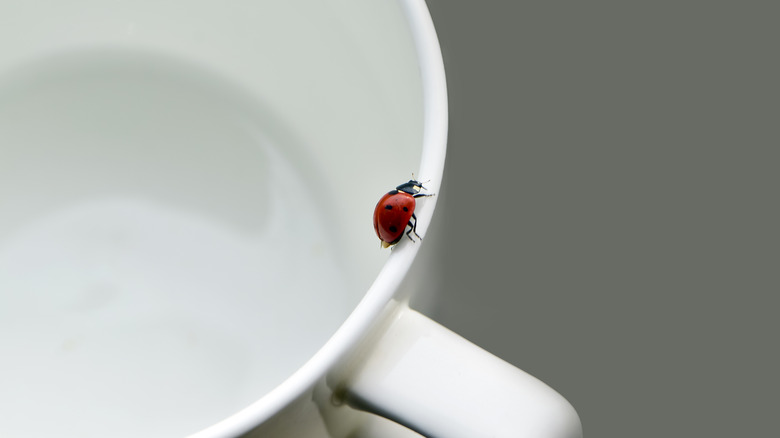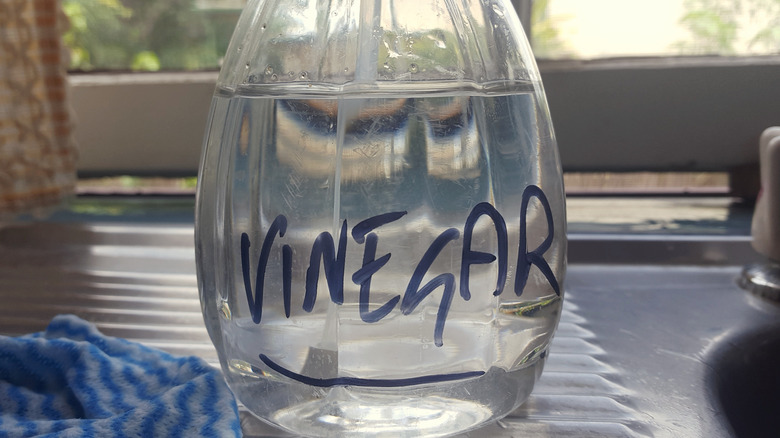Ladybugs Will Be A Thing Of The Past With One Common Kitchen Ingredient
Ladybugs are among the most beloved household pests, and most homeowners don't put much thought into getting rid of them. These creatures can bite but aren't typically known for biting, don't carry diseases, don't cause structural damage, and aren't a safety concern. Despite all this, they can be a nuisance — especially if there are lots of them in your house. While it's easy enough to capture a single ladybug and send it out your door, you may need more drastic measures if you have a full-blown infestation. Try getting rid of the ladybugs in your house with non-lethal methods first, such as repelling them with lavender or chrysanthemums, which they're repulsed by. If these don't work, you can try a more terminal method of pest control instead — vinegar will both repel ladybugs and kill them on contact.
There are many ways that you can use vinegar to get rid of pests and it's also a great tool for a ladybug infestation. For this method, mix a 1:1 solution of equal parts water and distilled white vinegar in a spray bottle and spray areas where you commonly find ladybugs in your home. If ladybugs are currently present, you can spray them directly to kill them. Only a small mist of vinegar spray is needed. The smell of distilled white vinegar lifts pretty quickly on its own. However, you can get rid of any lingering smells faster by lighting a scented candle or placing a bowl of baking soda close to where you sprayed the vinegar. You can also open some windows and turn on a fan to ventilate the room.
Keeping ladybugs out of your home
Because it's acidic, vinegar works as a contact insecticide and even a small amount does a great job of killing ladybugs as well as many other types of pests. It can also prevent additional ladybugs from coming into an area because it helps eliminate their pheromones. When ladybugs find shelter, they'll release pheromones that can bring other ladybugs to the location. Vinegar can help to eliminate this pheromone trail and prevent more from coming to the spot.
Although spraying this mixture can do a great job of removing ladybugs, remember that it's best to use this in combination with other methods while avoiding common mistakes that attract pests to your home, to be sure that more ladybugs don't appear in the future. Remember to seal entry points and apply weatherstripping and foaming sealants as needed to prevent them from getting inside.
You should also get rid of food and water sources in the kitchen and other areas of your home to avoid attracting them. Ladybugs will eat a variety of things including pollen as well as other pests such as aphids, scale insects, and mealybugs. Because of this, they can actually be beneficial for houseplants. However, if you don't want them around, you should avoid keeping common houseplants that they're attracted to such as fennel, dill, and yarrow.

